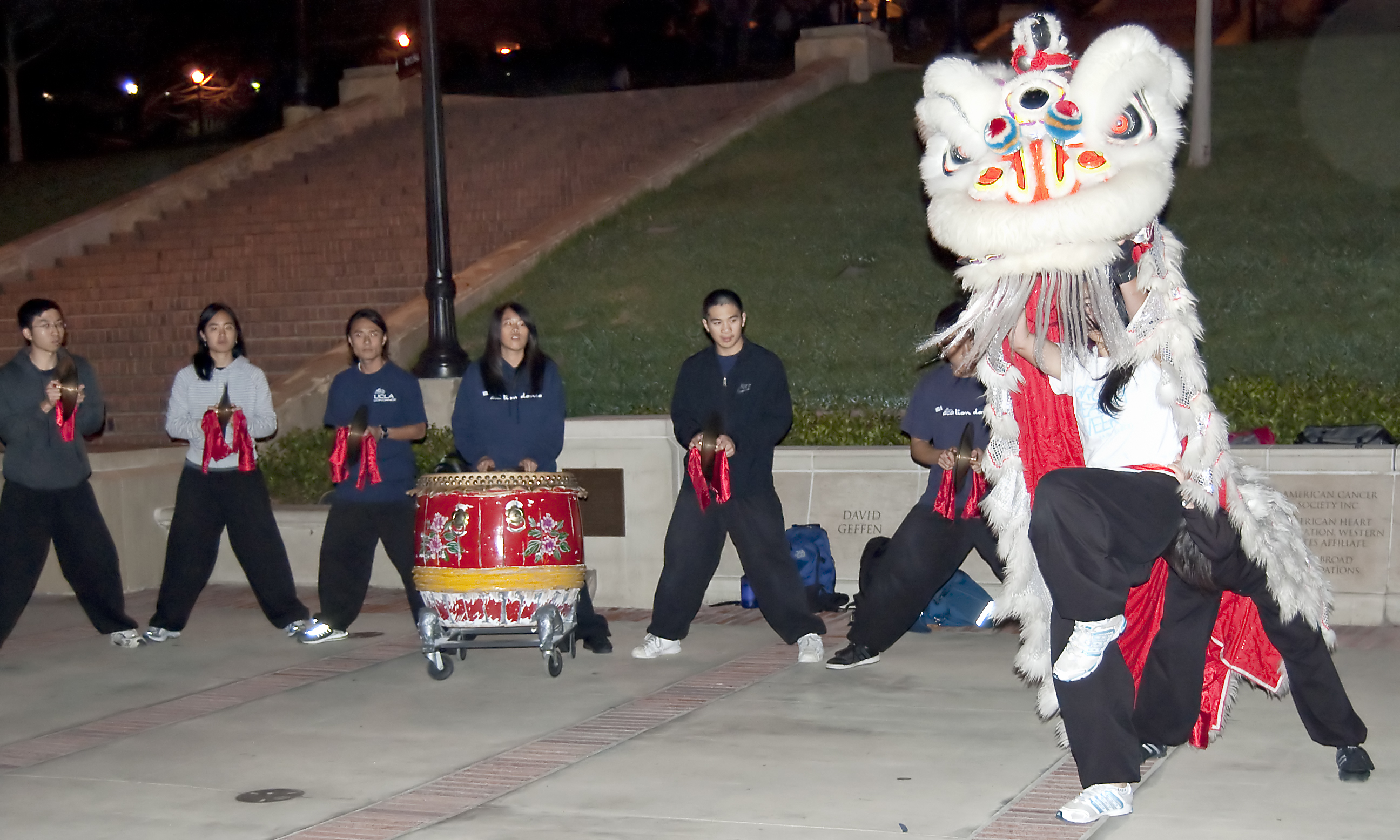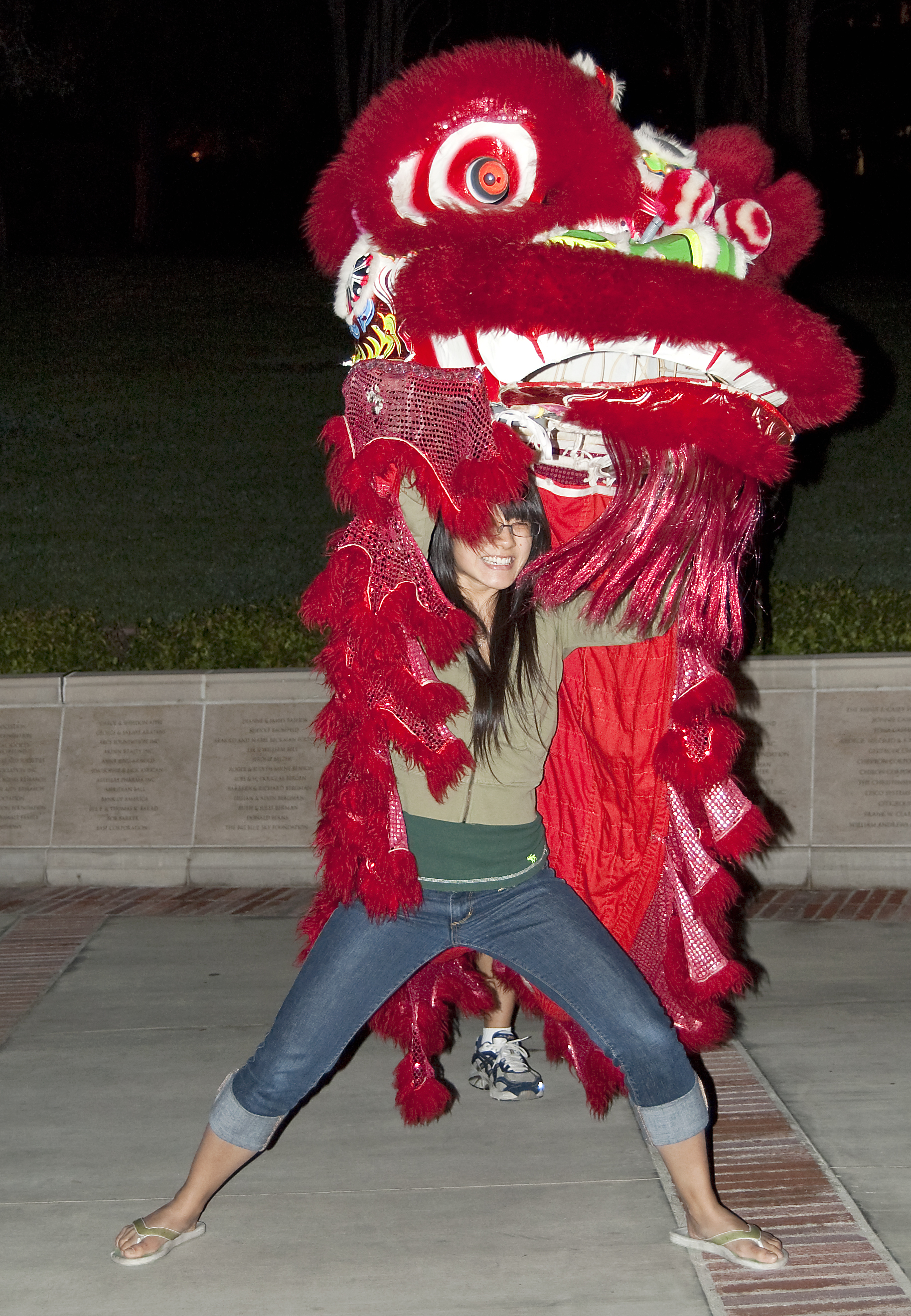
The Association of Chinese Americans Lion Dance team practices at Janss Steps. Acting as the lion’s heartbeat, drummers guide students who are “dragon walking.”
Janss Steps on a Thursday night is silent compared to the muddled roar of Westwood North Village. Close to 30 students, most of Chinese descent, line up in rows beneath the amber lights in Wilson Plaza ““ the twilight shadow of the ROTC drills from earlier that day.
On Thursday, the three directors for the UCLA Association of Chinese Americans Lion Dance team ““ essentially the group’s chief officers ““ faced the rows of students. One director, third-year mathematics/economics student James Wang, gently told the group that they would perform their opening ritual, aptly titled “The Salute.”
“Hut!” Wang cried out, breaking the silence.
Half of the students moved forward in a martial arts move that looks like tai chi meets typhoon. The remaining students were pillars: petrified by their inexperience. This was their first time at lion dance practice.
Lion dancing involves two dancers, operating the head and tail of a large puppet lion. It is a traditional Chinese art form used at birthdays, funerals, store openings, festivals and Chinese New Year.
By performing at such events as paid entertainers, UCLA’s lion dance team is financially autonomous. Their only substantial costs are the lion costumes, which can cost more than $500.
Mitchell Nguyen, a second-year anthropology student, was one of the participants new to the group. For Nguyen, the connection to his cultural roots is what pushed him to try lion dance for the first time.
“Lion dancing looked really interesting. I saw (it) at temple with my parents, and I just wanted to see how they did it,” Nguyen said.
The program thrives by building team members’ skill sets from the ground up, focusing on both the mechanics of dancing inside the lion as well as the rhythmic basics of playing cymbals and the drum.
“In lion dance, it’s hard to learn everything,” said Leonalyn Khanh, another coordinator and a third-year economics student. “I know I don’t know everything, and it would be boring for me if I did.”
Practice is important to help newcomers get accustomed to the dancing style, in which one dancer controls the lion’s head while another dancer holds its tail. At the first rehearsal, returning members divided new participants into three groups and gave them time underneath the lions.
“At first it was kind of awkward because you didn’t see where you were going,” Nguyen said. “It was awkward to shake the head, and you could see the outline of the face … but I think that after a while you get used to it.”
Groups of greenhorn lion dancers huddled around two lions, a red one named Pepper and a silver one named Nimbus. The team also has black, yellow and green lions, but only two or three are used during performances, Khanh said.
As newcomers took turns inside the lions, returning members counted off dance steps to childhood rhymes:
“One, two, buckle my shoe.”
The lions charged forward, their sequined manes glimmering beneath the plaza lamps.
“Three, four, shut the door.”
The novice lion dancers made their first attempt at dragon walking, a technique where the dancer lifts the lion’s head high above his own, before crossing the head over in a diagonal-down motion.
Lion dancing is rooted in the martial arts, and the drum rhythms serve as the lion’s heartbeat, instructing both lion and dancer how to move, Khanh said.
“The best lion dancers are good with emotions. … It’s not just putting on the suit. It’s being happy when it’s happy. It’s trying to be aggressive when it’s aggressive,” Khanh said. “You have to become the lion.”
The weekly rehearsals, normally on Wednesday nights from 9-11 p.m., are an opportunity for group members to appreciate a culture hidden even to most Chinese Americans, according to Victor Louie, the third director and a third-year cognitive science student.
“Lion dance is a culture that’s sort of dying now because … people are moving away from old traditions. Lion dance is a good way to bring back the old and keep it alive,” Louie said.
Before the night was over, returning team members performed an extended dance sequence, incorporating drums, cymbals and advanced dance techniques. Male dancers underneath Pepper stunted, a term used by Wang to explain how the tail lion props the head lion on his shoulders.
Dancers expressively controlled the lion’s eyelids, ears and mouth showing that lion dancing is also part puppetry.
The group ended just as they began. Khanh, Louie and Wang faced their mixed phalanx of new and seasoned lion dancers.
“Hut!” Khanh called out.
This time, moving forward, strong and connected, the group saluted as one.
